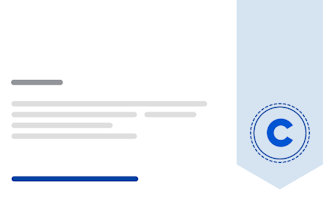What Is Data-Driven Decision-Making (DDDM)?
November 25, 2024
Article



This course is part of Healthy and Sustainable Foods and Products Specialization

Instructor: Olivier Jolliet
2,536 already enrolled
Included with 
(13 reviews)
(13 reviews)
Assess nutritional performance and sustainability of foods
Analyze trade-offs between health and environmental impact of foods
Apply these concepts to 5,800 individual food items and diets

Add to your LinkedIn profile
18 assignments






Add this credential to your LinkedIn profile, resume, or CV
Share it on social media and in your performance review


This course focuses on healthy and sustainable foods. After reviewing the crucial role of food for both health and the environment, we first look at the carbon footprint and environmental impacts of multiple ingredients and more complex foods. We also detail a health-based approach to quantify the impact of 5000+ individual foods on health, expressed in minutes of life lost and gain per serving. We then analyze trade-offs and targeted changes that can bring substantial health and environmental benefits with less than 10% caloric change. We finally address the health and sustainable performances of various diets, looking at disparities between gender, races and diets.
Welcome! This module will introduce you to our course. The introductory lesson will provide an overview of the topics we will explore and outline the expectations and procedures. You will be introduced to utilizing spreadsheets as a tool for evaluating different types of foods. The module will conclude by introducing methods that can be used to measure the environmental impact of various food choices.
10 videos8 readings6 assignments1 app item1 discussion prompt
This module focuses on evaluating the nutritional impact of food on individuals' health and how a combination of multiple evaluations can help us make changes to our diet that will result in positive impacts. You will be introduced to Dietary Risk Factors (DRF) and the Health Nutritional Index (HENI) as usable measurements. We will then move on to discuss the various trade-offs that one should consider when prioritizing a given measurement to inform their food choices. We conclude this module by thinking through how to make targeted changes to our diet to result in better nutritional and environmental outcomes.
9 videos7 readings8 assignments1 discussion prompt
This final module examines the dietary impacts of multiple foods to then analyze trade-offs and targeted changes that can bring substantial health and environmental benefits with less than 10% caloric change. Then, you will utilize the calculations skills you've practiced to complete the End-of-Course Assessment. This assessment will be similar to the previous end-of-week quizzes, but it will instead cover concepts from the entire course rather than just one week. Lastly, we ask you to reflect on how your meal choices have changed since you began the course. If you elect to do so, you will revisit our initial meal sharing Gallery exercise to share your most recent meal as you complete our course!
10 videos5 readings4 assignments1 app item2 discussion prompts



The mission of the University of Michigan is to serve the people of Michigan and the world through preeminence in creating, communicating, preserving and applying knowledge, art, and academic values, and in developing leaders and citizens who will challenge the present and enrich the future.


University of Michigan
Specialization


Johns Hopkins University
Course

Utrecht University
Course

Stanford University
Specialization




13 reviews
69.23%
7.69%
0%
7.69%
15.38%
Showing 3 of 13
Reviewed on Sep 29, 2024
Exceptional inputs in to healthy and sustainable foods. We need to get geared to eat healthy and sustainably



Unlimited access to 10,000+ world-class courses, hands-on projects, and job-ready certificate programs - all included in your subscription

Earn a degree from world-class universities - 100% online

Upskill your employees to excel in the digital economy
Access to lectures and assignments depends on your type of enrollment. If you take a course in audit mode, you will be able to see most course materials for free. To access graded assignments and to earn a Certificate, you will need to purchase the Certificate experience, during or after your audit. If you don't see the audit option:
The course may not offer an audit option. You can try a Free Trial instead, or apply for Financial Aid.
The course may offer 'Full Course, No Certificate' instead. This option lets you see all course materials, submit required assessments, and get a final grade. This also means that you will not be able to purchase a Certificate experience.
When you enroll in the course, you get access to all of the courses in the Specialization, and you earn a certificate when you complete the work. Your electronic Certificate will be added to your Accomplishments page - from there, you can print your Certificate or add it to your LinkedIn profile. If you only want to read and view the course content, you can audit the course for free.
If you subscribed, you get a 7-day free trial during which you can cancel at no penalty. After that, we don’t give refunds, but you can cancel your subscription at any time. See our full refund policy.
Yes. In select learning programs, you can apply for financial aid or a scholarship if you can’t afford the enrollment fee. If fin aid or scholarship is available for your learning program selection, you’ll find a link to apply on the description page.